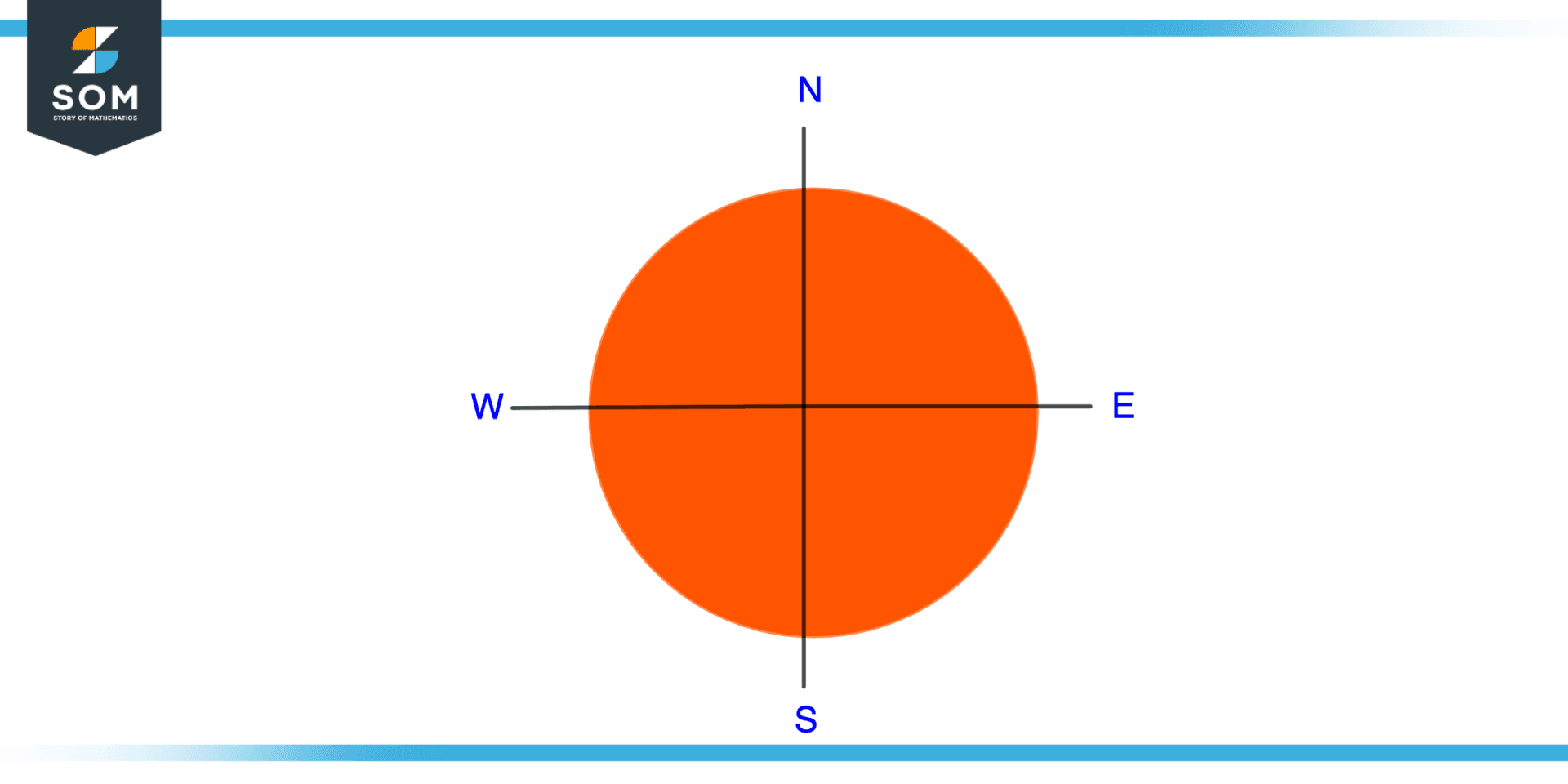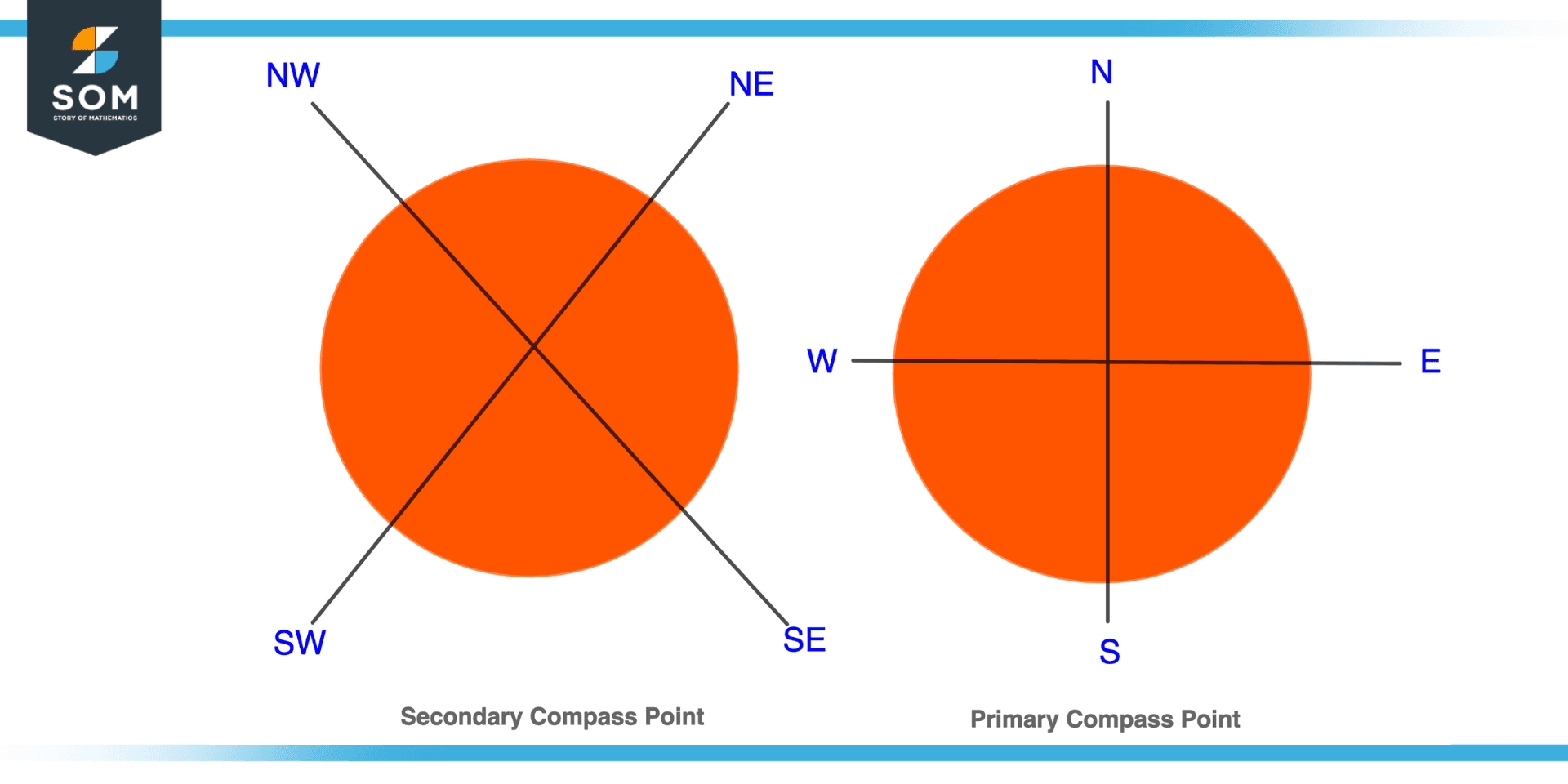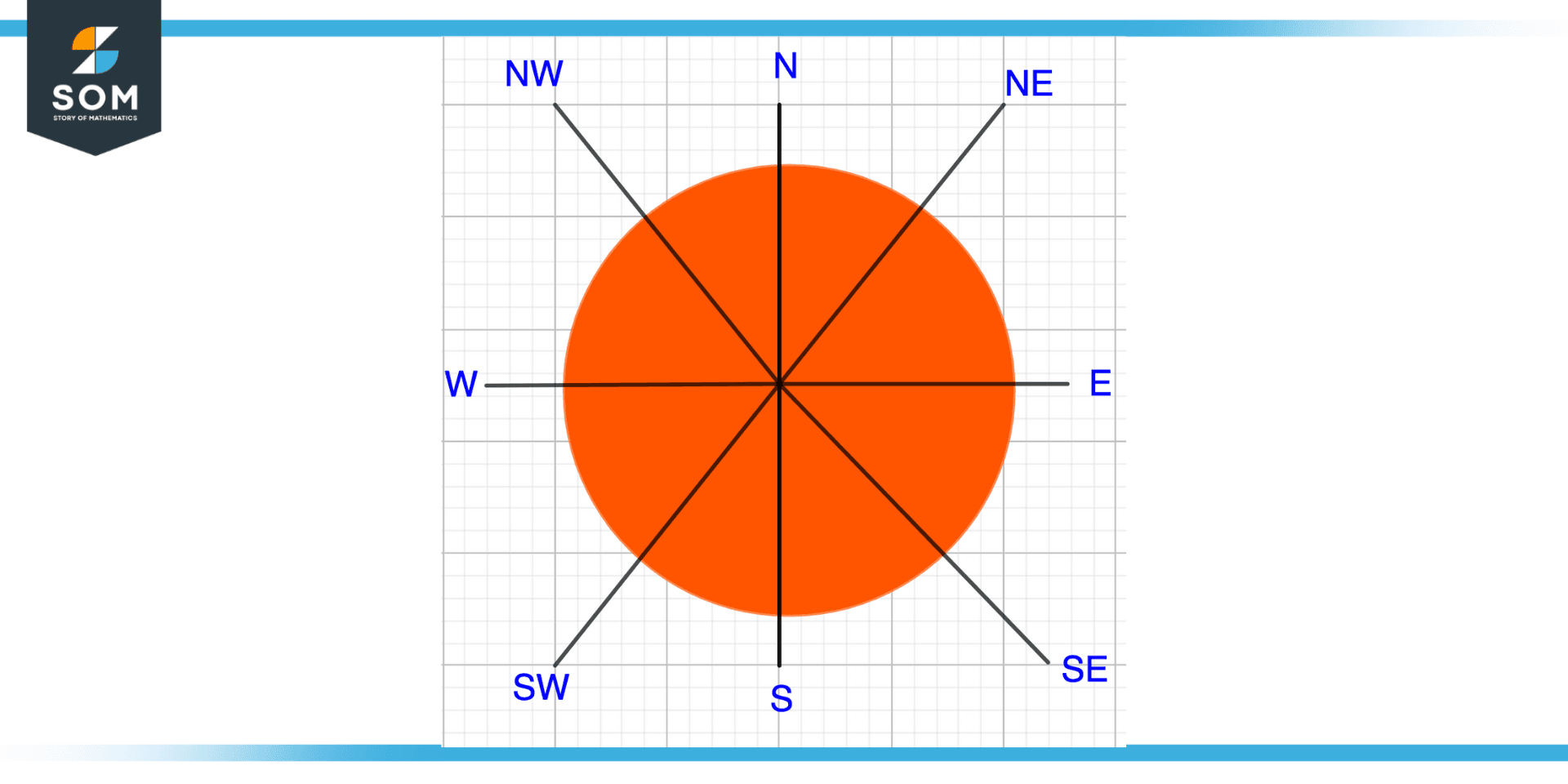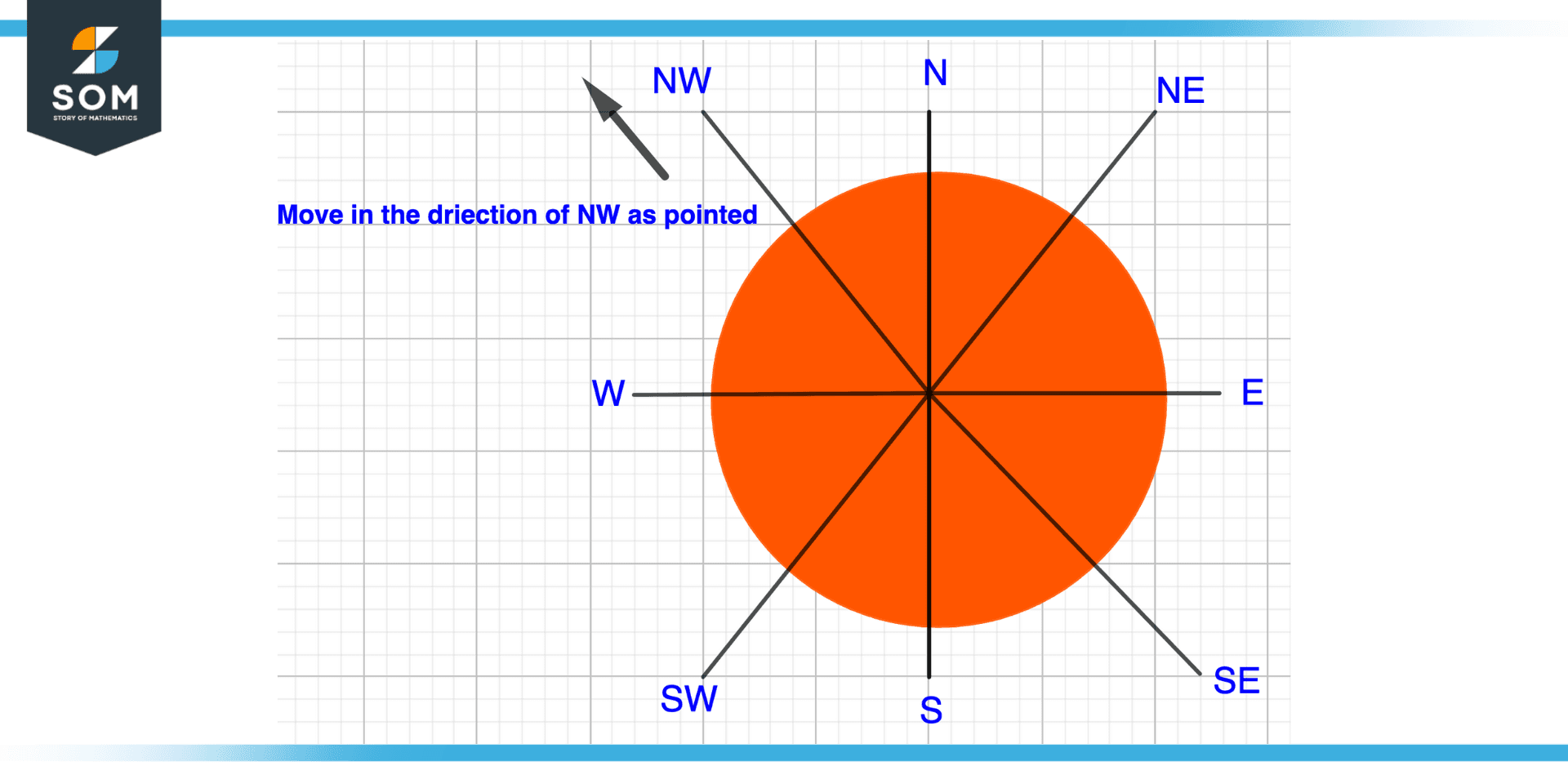JUMP TO TOPIC
Compass Point|Definition & Meaning
Definition
A compass point is a direction on a compass, which is a device used to determine direction. North, south, east, and west are the four primary points on a compass. These on the compass indicated points are used to help the user find their bearings and navigate.
Conceptual Overview

Figure 1 – Visualization of four Compass Point
There are intermediate points known as the “intercardinal” or “secondary” compass points in addition to the primary compass points. Northeast (NE), Southeast (SE), Southwest (SW), and Northwest (NW) are some of these locations . A simple compass illustrating the compass point is shown in the figure above.
Maps and compass points are frequently used together to navigate and locate a destination. The north is typically at the top of maps, followed by the other compass points in a clockwise direction. The user can then follow the compass needle to determine their direction of travel after aligning their compass with the map.
Generic Types of the Compass Point

Figure 2 – Primary and Secondary Compass Point
There are two main types of compass points, primary compass points and intermediate (or secondary) compass points. These points can be visualized in the above figure.
- The four main primary points of the compass are north, south, east, and west. These points, which are based on the magnetic field of the Earth, are used to help one find their location on a map or in the real world.
- The intermediate or secondary compass points are the Northeast (NE), southeast (SE), southwest (SW), and northwest (NW) . These halfway points are used to provide a more accurate indication of direction and are situated between the main compass points.
Compass Diagram
8-Wind Compass Diagram

Figure 3 – 8 wind Compass rose
An illustration of the eight major compass directions—north, northeast, east, southeast, south, southwest, west, and northwest—is known as an “8-wind compass rose.” On the compass rose, each direction is represented by a point, and the angles between the points are all distributed equally.
The figure above depicts the 8-wind compass rose to have four cardinal and intercardinal compass points each making a total of 8 compass points. The Figure is shown above.
16-Wind Compass Diagram
In contrast to an 8-wind compass rose, a 16-wind compass rose includes intermediate directions like north-northeast and east-southeast. The angles between the points on this type of compass rose, which has a total of 16 points, are half as large as those on an 8-wind compass rose.
32-Wind Compass Diagram
A 16-wind compass rose is similar to a 32-wind compass rose, but a 32-wind compass rose has 32 points overall and even more intermediate directions. A 32-wind compass rose’s point-to-point angles are one-fourth that of an 8-wind compass rose.
Important Terminologies
Half and Quarter Points
Half-points and quarter-points on a compass rose are the intermediate directions that are situated halfway or quarter-way between two principal directions, respectively. For instance, the directions northeast, southeast, southwest, and northwest would be the half-points on an 8-wind compass rose.
The quarter-points on a 16-wind compass rose represents the directions. north-northeast, east-northeast, east-southeast, south-southeast, south-southwest, west-southwest, west-northwest, and north-northwest.
Cardinal Directions
The four primary points on a compass used to denote direction are known as the cardinal directions. North, South, East, and West are these directions.
The North Pole, which is situated at the top of the Earth, is the direction that faces north.
The South Pole, which is at the bottom of the Earth, is in the direction of the south.
The direction that points in the direction of the rising sun is east, and the direction that points in the direction of the setting sun is west.
The most crucial compass points are these four; people use them to navigate and find their way around.
Cultural Significance of Compass Points
Since the dawn of human civilization, people have used compass points to indicate direction. For centuries, people have used compass points in many cultures to help them get their bearings and comprehend their surroundings.
For centuries, different cultures have used compass points to indicate the direction of locations, items, and landmarks. Compass points are also linked to particular symbolism or meaning in a variety of cultures.
Chinese Culture
For instance, the eight trigrams of the I Ching, which are thought to represent the fundamental laws of the universe, are connected to the compass points in traditional Chinese culture. Compass points are used in this context to represent various elements of the natural world, including mountains, water, and wind.
Western Culture
In Western cultures, the directions of the four cardinal points of the compass—north, south, east, and west—are frequently indicated by compass points. The positioning of locations, things, and landmarks is frequently described using these points. Say, “The store is north of the city center,” for instance.
Applications of Compass Point
Compass points have numerous useful applications in numerous industries. Here are a few illustrations:
- Navigation: Compass points are used to find one’s way to a specific location and determine the direction to go in. This is especially helpful when engaging in outdoor pursuits like hiking, where a map and compass can be used to navigate through uncharted territory.
- Aviation: To navigate their flights and stay on course, pilots use compass points. To ascertain their location and direction of travel, they might make use of a compass or other navigational aids like radar or GPS.
- Marine navigation: To steer their ships and boats and stay on course, captains use compass points. To update their location and direction of travel, they might make use of navigational aids or a compass .
- Land Survey: Compass points are used in land surveying to determine a piece of land’s orientation and to measure angles and distances.
- Military: Compass points are used by military units to communicate their positions to other units and help them find their way around a battlefield.
- Search & Rescue: Compass points are used by search and rescue teams to find missing people and navigate through unfamiliar terrain.
- Geography: Compass points are used in the study of geography to comprehend how the Earth and its continents are oriented and move.
Understanding by Example
Example
Consider an argument “To the northwest of here is the closest gas station.”. How would you be able to easily locate the direction? Give a solution to the problem.
Solution

Figure 4 – Example of Compass Point
In this illustration, the direction of the gas station in relation to the speaker’s current location is indicated by the compass point “northwest.” The speaker is able to provide precise directions on where to find the gas station by using compass points. The solution is described in the figure above.
When navigating and reading a map, compass points are frequently used to indicate the direction of locations, landmarks, and other points of interest. The direction of wind and storms is described using them in a variety of other contexts, such as weather forecasting.
All mathematical drawings and images were created with GeoGebra.
